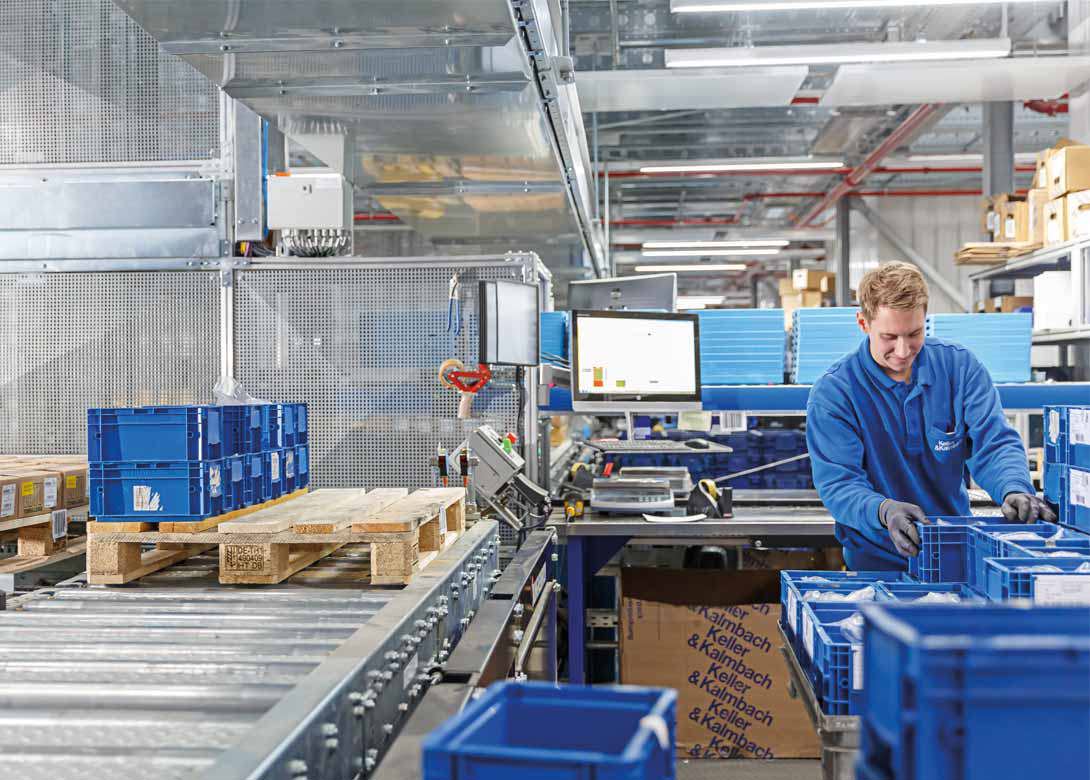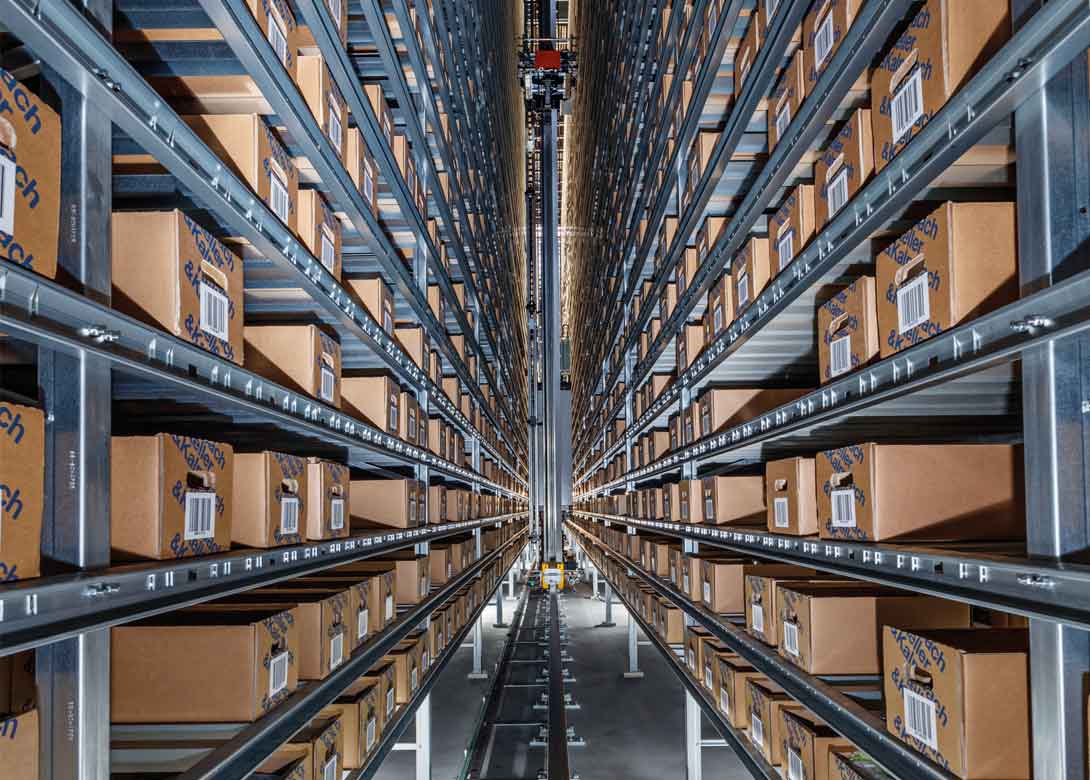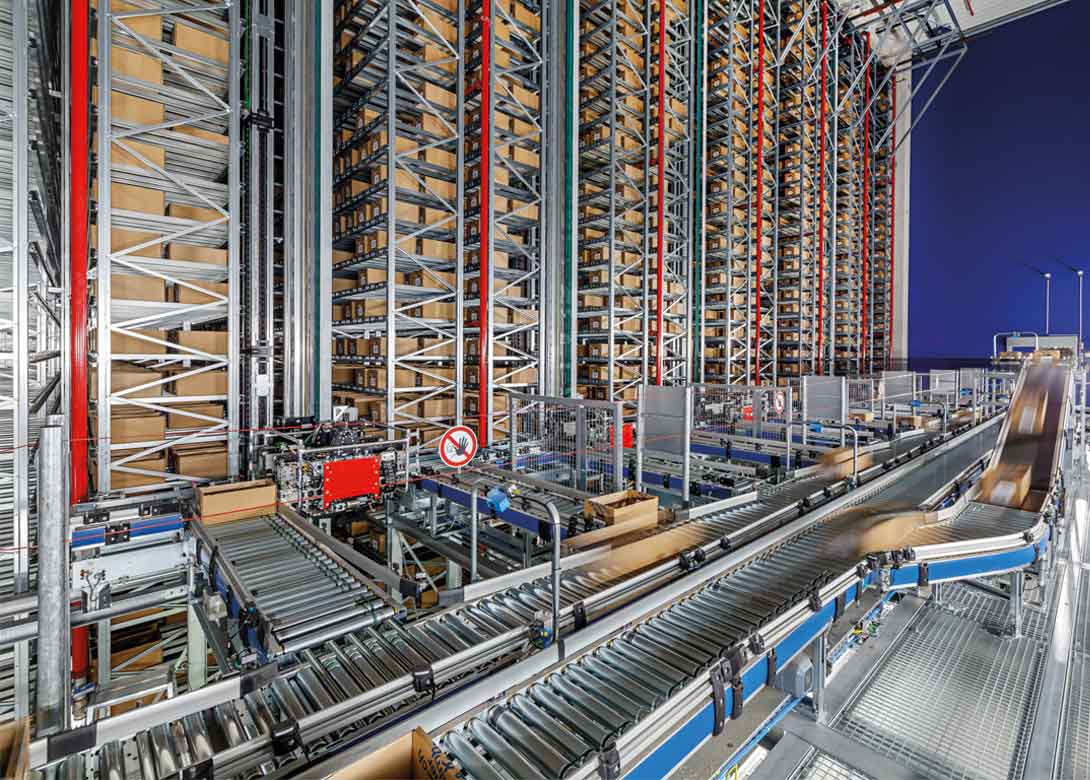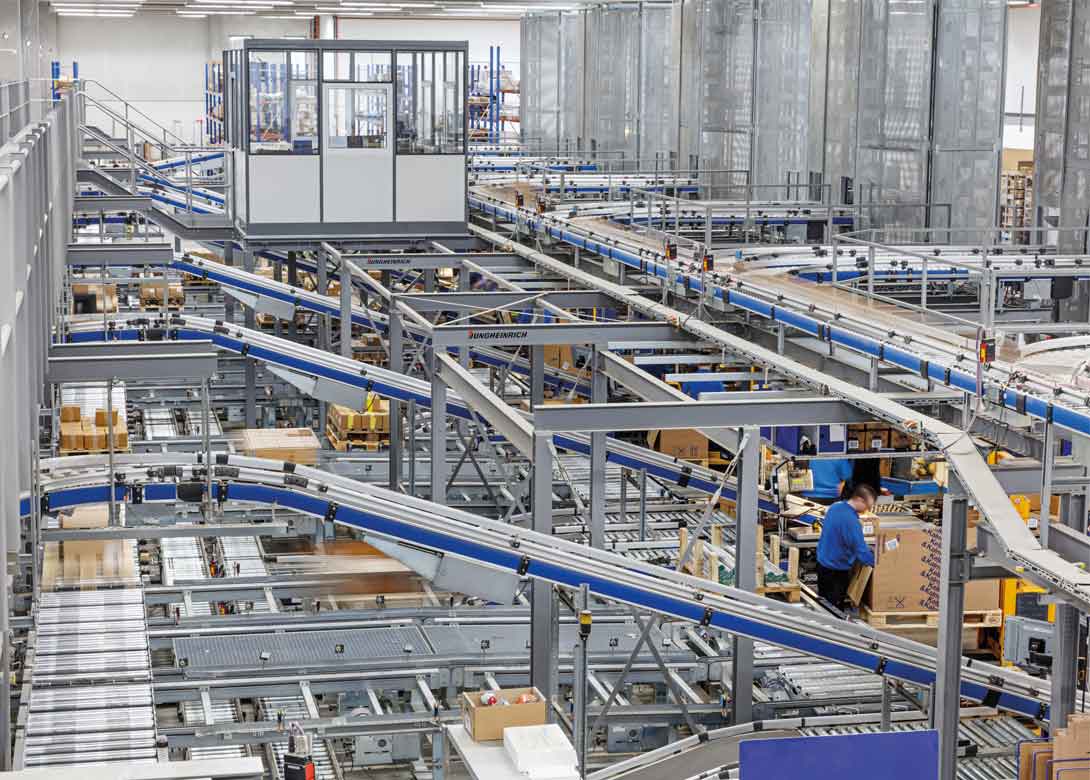
Through the help and close partnership with Jungheinrich, Keller & Kalmbach has been able to consistently expand the capacities of its central warehouse, whilst still providing a first class service to its customers.
Keller & Kalmbach’s facility includes an automated pallet warehouse and a small parts warehouse as well as conveyor technology, as well as the set-up of a separate hall with goods to person workstations and palletising robots for order picking and SLC filling. As general contractor, Jungheinrich was responsible for planning, project configuration and implementation of the complete intralogistics system.
Keller & Kalmbach GmbH was founded in Munich, Germany, in 1878 as a wholesaler for screws and blacksmithing supplies. Since those beginnings, the company has developed into a leading service provider for C-parts management worldwide. With about 800 employees, Keller & Kalmbach generated €270 million in sales in 2016. That is almost twice as much as in 2009, when the first construction phase of the new central warehouse was built under Jungheinrich project management. The reason for this extraordinary growth was the company’s consistent focus on C-parts management for industrial customers. This includes complete procurement, material resource planning, warehousing and provision of C-parts in small load carriers (SLCs). The project involved special requirements for intralogistics processes in the warehouse, for example in terms of order picking and determining the order of containers for palletising. The ultimate objective was for Keller & Kalmbach customers to receive delivery of their goods at the right time, to the right place and in the right quantity.

Step-by-step commissioning during ongoing operation
Due to larger storage quantities and increased diversity of articles, space in the new central warehouse in Hilpoltstein became limited sooner than expected. “We needed more storage capacity relatively fast,” recalls Dr Ingomar Schubert, head of supply chain management at Keller & Kalmbach. Accordingly, senior management decided to expand the central warehouse in 2013. Jungheinrich was retained again as the general contractor because the intralogistics expert delivers everything from a single source. The fact that the two partners had already designed the warehouse for possible expansion in the original design now paid off.
By the end of 2014, the high bay warehouse was expanded, first by two aisles and later by three additional aisles. By July 2015, it was already possible to start operation in the new expanded pallet storage facility with an additional 37,000 storage positions. The new high bay warehouse, erected with a roof and wall-supported silo construction, is 120m in length, 23m in width and 37m in height. Five single mast rack operating devices, each with two load handling attachments, reach 25 double cycles per hour and aisles on 35 levels for highly dynamic requirements. Expansion of the automated small parts warehouse for cartons followed in early 2016 with an additional six aisles. This expanded the automated small parts warehouse by 137,000 carton storage positions to a capacity for a total of 289,290 cartons. At the same time the overall materials handling capacity, and with it the order picking output, was doubled. The most important processes in the warehouses were designed redundantly.
“The extension of the conveyor technology during ongoing operation was very complex, in terms of both planning and assembly. We had to install new conveyor systems and two pallet lifters in the existing warehouse in extremely confined spaces,” explains Dipl.-Ing Matthias Michen, project manager at Jungheinrich.
“The step-by-step commissioning was not originally planned that way. But it allowed us to already use the warehouse area prior to complete commissioning,” says Schubert, commenting on Jungheinrich’s flexibility throughout the entire construction and test phase. “All that required extremely precise coordination because we couldn’t allow for any negative impact on regular operation, which was running in three shifts at that time. On the other hand, there were also deadlines to meet. The only way we could succeed was with collaborative work based on an exemplary partnership with give and take on both sides,” reports Manuel Wagist, team leader of warehouse management systems at Jungheinrich.

Fast and efficient order picking of customer SLCs
The concept for the middle hall, with an area of 2,600m², was specially adapted to industrial customer business. “It was important for us to implement fast and efficient order picking here directly into our customers’ SLCs or into our in-house SLCs with RFID tags. This is because in our business, if you pick up a screw once too many, you’ve already lost money. That means we always have to keep our processes very lean,” says Schubert.
The result consists of eight ergonomic workstations connected via conveyor systems with the small parts warehouse and also via several levels of structural steel platforms with the high bay warehouse. Items ordered by customers via EDI (Electronic Data Interchange) are counted off from storage cartons here and packaged directly into the customer SLCs.
Once the shipping container is full, it is labelled, placed on a tray and buffered in an order picking unit until order picking for all the containers in that customer order is complete. Then a palletising software calculates the layer formation for the palletising robot, transferring to the Jungheinrich Warehouse Management System (WMS) the order in which the SLCs have to be retrieved from the order picking unit onto a buffer track. Once all the containers are standing on the buffer track, they are all retrieved at once and then palletised. The special feature of the palletising robot is a flexible load handling attachment that is able to grip and lift different types of SLCs without changing tools. It achieves an output of 500 containers per hour.
“The great advantage of the robot is that we are now much more flexible in order picking because we no longer have to pick in the same order in which goods are placed on the pallet. So for large orders that come in unexpectedly, we can order pick at several workstations in parallel with a uniform workload on the stations,” explains Schubert.
Automatic palletising by robot also means employees no longer have to lift heavy containers, some weighing up to 20kg. In addition to industrial customer orders, conventional orders for tradesmen, fitters or special retail can also be processed flexibly at each workstation. A smaller order picking unit ensures the correct order. It holds up to 50 cartons from the ASW until the order can be sequenced and processed at the workstation. In this manner, approximately 150 tonnes of goods with about 10,000 pick positions in cartons, SLCs or open fronted storage boxes pass through shipping each day on their way to customers of Keller & Kalmbach. There is also a new area in the hall for repacking, sorting and forming sets, as well as a washing system and a rack system for empty containers.
Controlling of individual functions, the interface to the Proalpha ERP system and controlling of logistics processes by the Jungheinrich WMS all work flawlessly now. “We were impressed by the trusting collaboration with Jungheinrich over the entire time. We remained on schedule and even below the originally proposed budget. We would be happy to work together again with Jungheinrich on any future expansion,” confirms Schubert.
Keller & Kalmbach also relies on the competence of Jungheinrich to service the system, with mechanical maintenance performed on-site by Jungheinrich after sales service engineers, while central support for logistics system is available 24 hours a day from Jungheinrich Systems Solutions in Graz, Austria, in case of electronic data processing malfunctions.


Biog
Having spent a decade in the fastener industry experiencing every facet – from steel mills, fastener manufacturers, wholesalers, distributors, as well as machinery builders and plating + coating companies, Claire has developed an in-depth knowledge of all things fasteners.
Alongside visiting numerous companies, exhibitions and conferences around the world, Claire has also interviewed high profile figures – focusing on key topics impacting the sector and making sure readers stay up to date with the latest developments within the industry.







